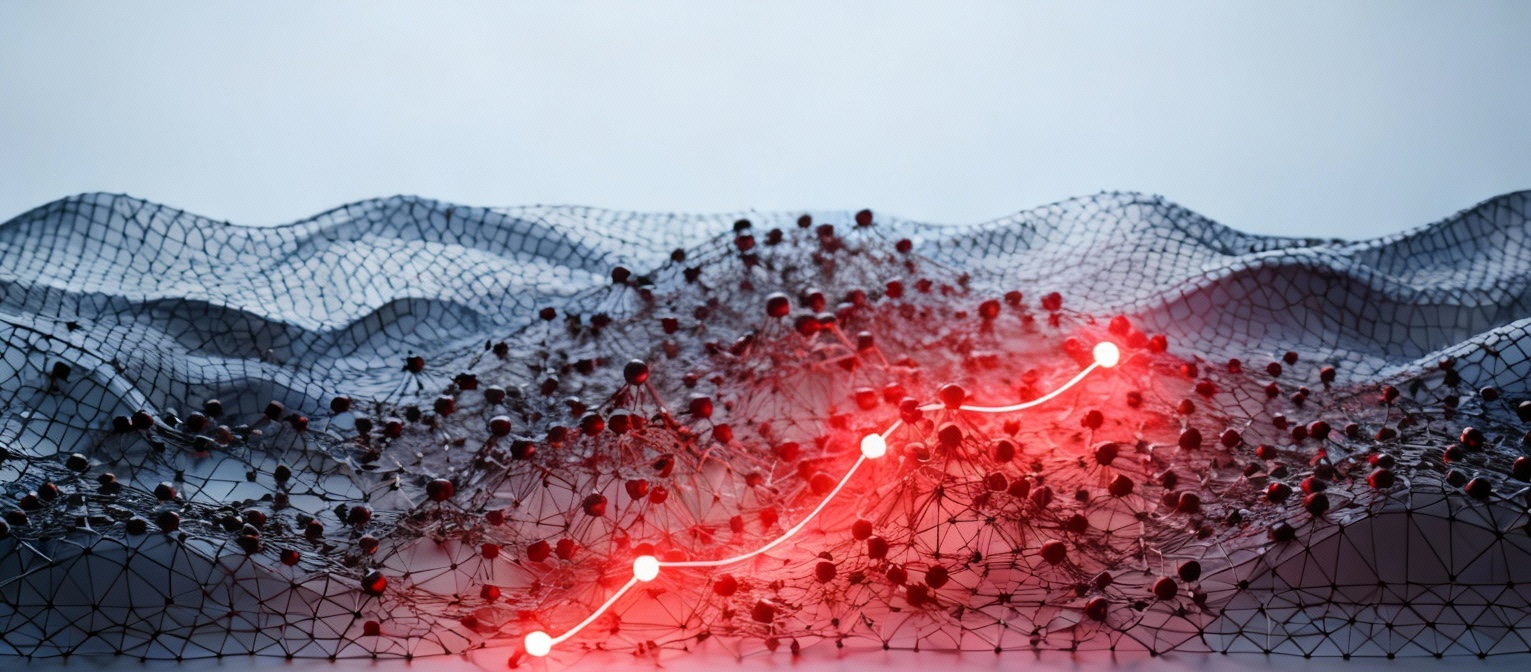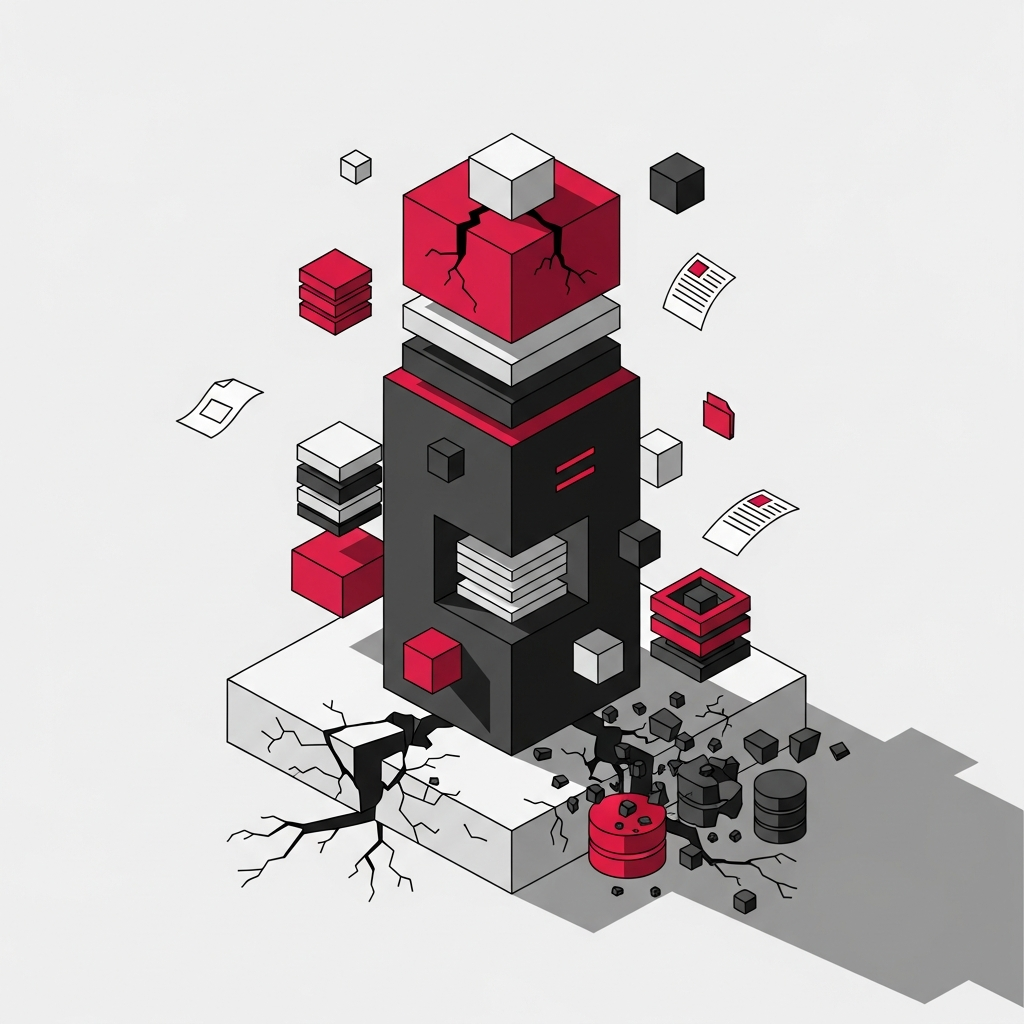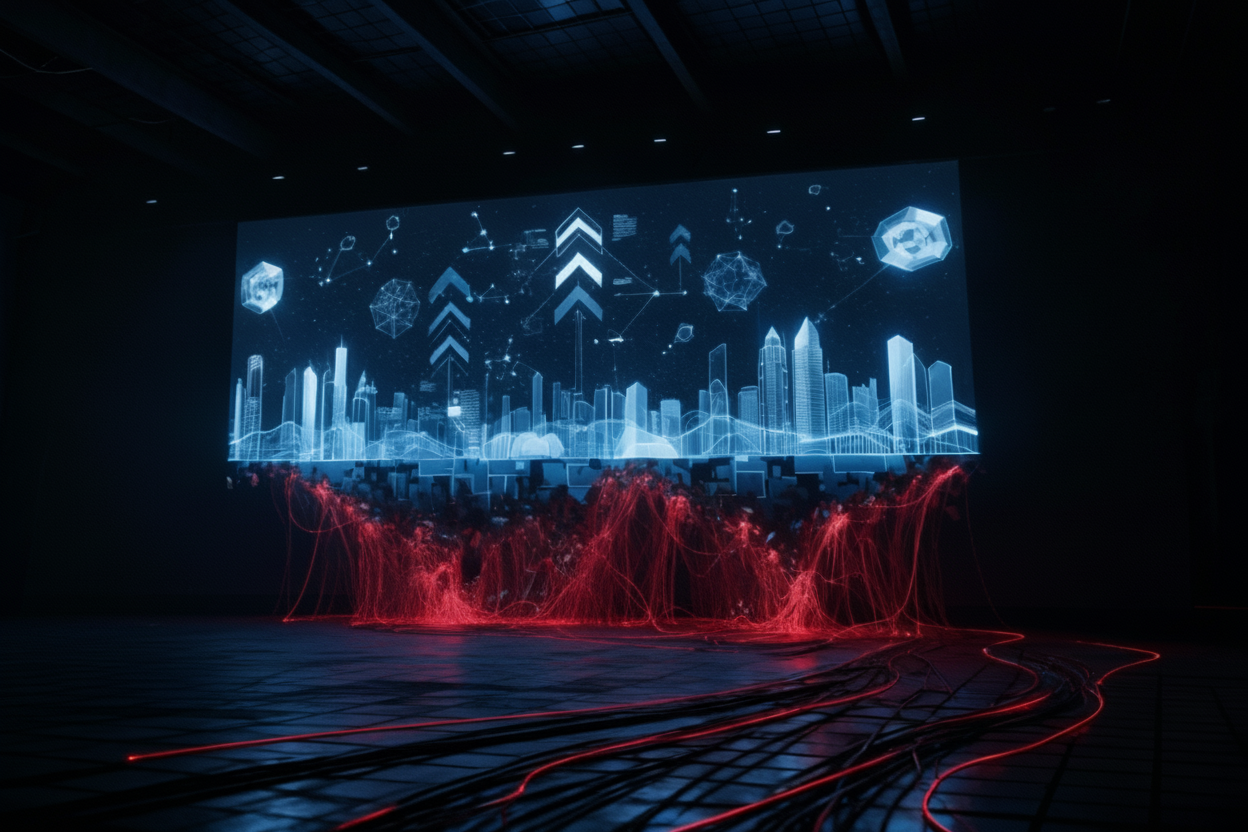What is GraphRAG and Why Should I Care?

Let's be honest. Your team has likely spent the last year building out a Retrieval-Augmented Generation (RAG) system. You've connected your Large Language Model (LLM) to your company’s data, and it's working. It’s pulling facts, summarizing documents, and cutting down on those embarrassing “hallucinations” that plagued your early experiments. You’ve successfully solved the first, most obvious problem of making your AI smarter with your own information.
But now, you’re hitting a wall.
Your users are asking harder questions. Questions that don’t live in a single document but require connecting dots across multiple sources. "What were the common themes in customer complaints for Project X, and how do they correlate with the engineering challenges we documented in Project Y?" A standard RAG system chokes on a query like that. It retrieves a jumble of disconnected text snippets: some about customer complaints, some about engineering, and forces the LLM to guess how they fit together.
You’ve reached the plateau of standard RAG. It’s a powerful tool for finding information, but it’s fundamentally limited when you need to understand relationships. This is not just a technical wrinkle; it's a strategic barrier. The highest-value insights don’t live in isolated facts; they live in the connections between them.
So, how do you break through? The answer lies in a powerful architectural evolution called GraphRAG. It’s not just another buzzword; it’s the next logical step for any organization serious about building a true intelligence engine.
From Digital Librarian to Master Detective
To understand GraphRAG, you first have to appreciate the subtle flaw in its predecessor.
Think of standard, vector-based RAG as a hyper-efficient digital librarian. Your knowledge base is a massive library of books (your documents), each chopped into individual pages (chunks). When you ask a question, the librarian doesn’t understand the question’s logic. Instead, it finds the pages whose semantic meaning is closest to your query. If you ask about "feline companions," it knows to pull pages about "house cats" because, in the vast universe of language, those concepts live in the same neighborhood.
This is incredibly useful for simple fact-finding. But what happens when you ask, "What contribution did the son of Euler's teacher make?"
Your librarian is stumped. There’s almost certainly no single page in the library that contains "Euler's teacher," "his son," and "his son's contribution" all in one place. The librarian can find pages about Euler, pages about his teacher (Johann Bernoulli for those not up to date on their mathematics history), and pages about Daniel Bernoulli (the son), but it has no inherent understanding of the relationship that connects them. It returns a handful of disconnected facts, and your query fails. This is the core problem of context fragmentation.
GraphRAG is the upgrade from librarian to master detective.
Instead of just storing pages, the detective first reads every book in the library and builds a giant corkboard, in other words, a knowledge graph. Every key person, place, concept, and event becomes a pin on the board (a node). Then, the detective uses red string to explicitly map the relationships between them (an edge). 'Johann Bernoulli' is connected to 'Euler' with a string labeled 'was teacher of'. 'Johann Bernoulli' is connected to 'Daniel Bernoulli' with a string labeled 'is father of'.
Now, when you ask the complex question, the detective doesn't just look for semantic similarity. It performs true multi-hop reasoning by physically tracing the strings across the board:
- It finds the 'Euler' pin.
- It traverses the 'was teacher of' string to find 'Johann Bernoulli'.
- It traverses the 'is father of' string to find 'Daniel Bernoulli'.
- Finally, it pulls the information connected to the 'Daniel Bernoulli' pin to answer your question.
This is the fundamental difference: standard RAG operates on implicit, probabilistic similarity. GraphRAG operates on explicit, deterministic relationships. It moves beyond simple retrieval to genuine reasoning.
How It Works: The Strategic Investment in Structure
Implementing GraphRAG involves a strategic shift: you deliberately front-load the heavy lifting into an offline “indexing” phase to make your real-time queries incredibly powerful and efficient. This is the “hard thinking” done upfront.
The process generally breaks down into two main stages:
Building the Enterprise Brain
This is where you transform your messy, unstructured data into a structured, queryable knowledge network.
- Extraction: An LLM reads through all your documents, reports, emails, transcripts, and acts like a tireless analyst, identifying key entities (people, products, companies) and extracting the relationships between them. This becomes the raw material for your knowledge graph.
- Community Detection: Here’s where the magic happens. Once the graph is built, you apply graph machine learning algorithms to find hidden structures in your data. A community detection algorithm like the Leiden algorithm automatically clusters densely connected nodes, effectively identifying emergent themes and semantic concepts you didn't even know existed. It's a way of discovering the "unknown unknowns" buried in your information silos.
- Hierarchical Summarization: The system then generates summaries for each of these detected communities, from the most granular clusters up to the highest-level themes. This creates a multi-layered, abstractive map of your entire knowledge base.
The payoff for this intensive setup is enormous. A standard RAG system can’t answer a global question like, “What are the main strategic risks discussed in our quarterly reports?”. GraphRAG answers this with ease by searching those pre-computed, high-level community summaries, giving you a synthesized, holistic view in seconds.
Answering Questions with Precision
When a user asks a question, the system now has a suite of sophisticated tools at its disposal:
- For broad, abstract questions ("What are the primary areas of disagreement?"), it uses a Global Search on the community summaries.
- For specific questions ("What projects was Jane Doe involved in?"), it uses a Local Search, finding the 'Jane Doe' node and fanning out to its direct connections.
The context passed to the LLM is no longer a random assortment of text chunks. It’s a highly relevant, structured subgraph of entities and relationships, or a concise, thematic summary. This allows the LLM to generate answers that are dramatically more accurate, detailed, and well-reasoned.
The Business Case: Beyond Better Answers to Real-World ROI
So, why should this matter to you as a business leader? Because GraphRAG doesn't just provide better answers; it unlocks new capabilities and addresses critical business risks.
- Mitigating Catastrophic Errors with Contextual Fidelity A terrifying weakness of standard RAG is "context poisoning". Because it relies on semantic similarity, it can retrieve information that uses the right words but is dangerously wrong in context. A documented example shows a query for "therapies for mouth neoplasms" retrieving an article on rectal cancer simply because both use similar medical and oncology terms. The LLM, faithfully summarizing the context it was given, would present a dangerously misleading answer. GraphRAG prevents this. It would first locate the "mouth neoplasms" node in the graph and retrieve only the treatments, studies, and data explicitly connected to that specific node. This structural constraint ensures the context is not just thematically similar but verifiably relevant, drastically improving the safety and trustworthiness of your AI.
- Building an Auditable "Glass Box" for High-Stakes Industries In regulated fields like finance, healthcare, and legal, the "black box" nature of AI is a non-starter. It’s not enough to get the right answer; you have to prove how you got it. GraphRAG is inherently explainable. The path the system takes through the graph to find an answer is a clear, auditable trail of reasoning. This traceability is critical for compliance, debugging, and building the organizational trust required for widespread adoption.
- Unlocking High-Value, Multi-Step Reasoning This is where GraphRAG delivers its most transformative value. It enables you to ask a class of sophisticated questions that were previously impossible for an automated system to answer.
- Financial Services: Instead of just flagging a suspicious transaction, you can ask, "Identify any circular transaction patterns where money flows through a series of intermediaries before returning to an account linked to a sanctioned entity". This uncovers entire fraud networks invisible to other systems.
- Healthcare: A clinician can ask, "What is the recommended treatment for a 65-year-old diabetic patient with hypertension, a history of kidney disease, and a specific genetic marker?". The system traverses connections between diseases, drugs, contraindications, and genomic data to provide a personalized, evidence-based recommendation.
- Enterprise Knowledge Management: You can finally break down your information silos. Build a unified knowledge graph of your entire organization and ask, "What were the key technical challenges in projects similar to Project X, and who were the subject matter experts that solved them?". This turns your internal search into a true intelligence and discovery engine.
- A Smarter Economic Model Yes, building a knowledge graph requires a significant upfront investment in computation. But the payoff comes at query time. Because the retrieved context is so dense and precise (e.g., a concise summary instead of ten raw text chunks), the system can often achieve a better answer with far fewer tokens. Microsoft's research found that its implementation required between 26% and 97% fewer tokens at query time compared to other methods. In a world where every token has a cost, this leads directly to lower API bills, reduced latency, and a more efficient operational model.
The Road Ahead: Are You Ready?
Let's be clear: GraphRAG is not a plug-and-play solution. It requires specialized expertise in graph databases, NLP, and MLOps. The process of extracting accurate entities and relationships from unstructured text is a complex challenge. And for highly dynamic datasets, the need to rebuild the graph index can be a significant hurdle.
Even in Microsoft’s own GraphRAG study, the researchers used relatively simple indexing and evaluation protocols, like chunking, summarizing, and evaluating nodes entirely through the LLM itself. Yet, despite this lightweight setup, the results showed clear performance gains and reduced token costs, suggesting the potential power of graph-based retrieval even under basic conditions.
Still, GraphRAG is not without trade-offs. The up-front cost of graph construction can be substantial, and relational reasoning isn’t always ideal for “needle-in-a-haystack” retrieval where a high-precision vector search can excel. In practice, the strongest systems combine both approaches, using GraphRAG to reason across relationships and vector search to surface fine-grained facts, creating a hybrid architecture that balances depth and precision.
All that said, the broader progression is undeniable. The initial problem was that LLMs were untrustworthy. RAG provided the first-order solution by grounding them in facts. But businesses quickly discovered that real-world logic relies on complex relationships that simple semantic search cannot handle.
GraphRAG represents the next step in that evolution. It is a deliberate shift away from purely probabilistic systems toward structured, explainable reasoning. For any serious enterprise use case, this is not a luxury; it's a strategic inevitability. The question is no longer if you will need to move beyond vector search, but when.




